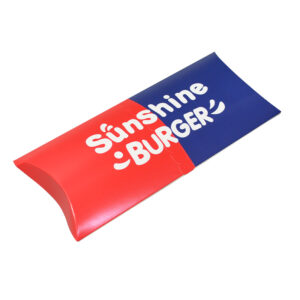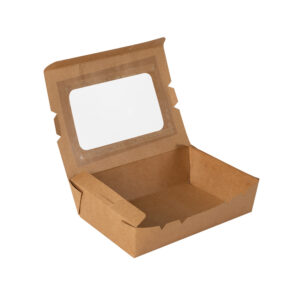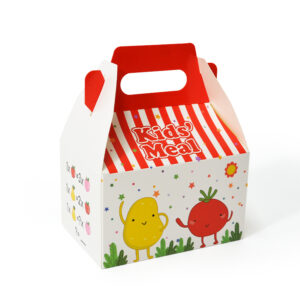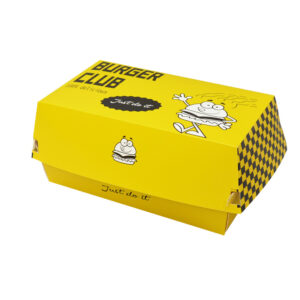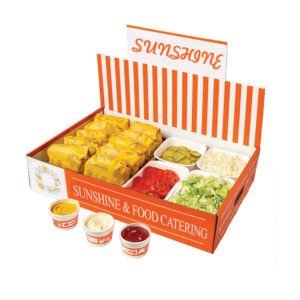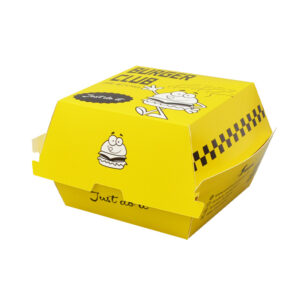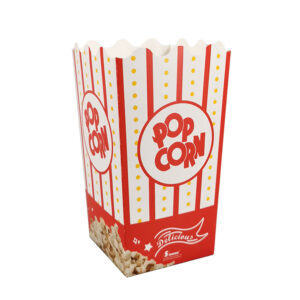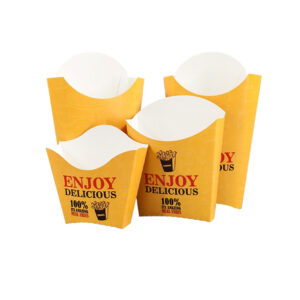Introduction to food box packaging
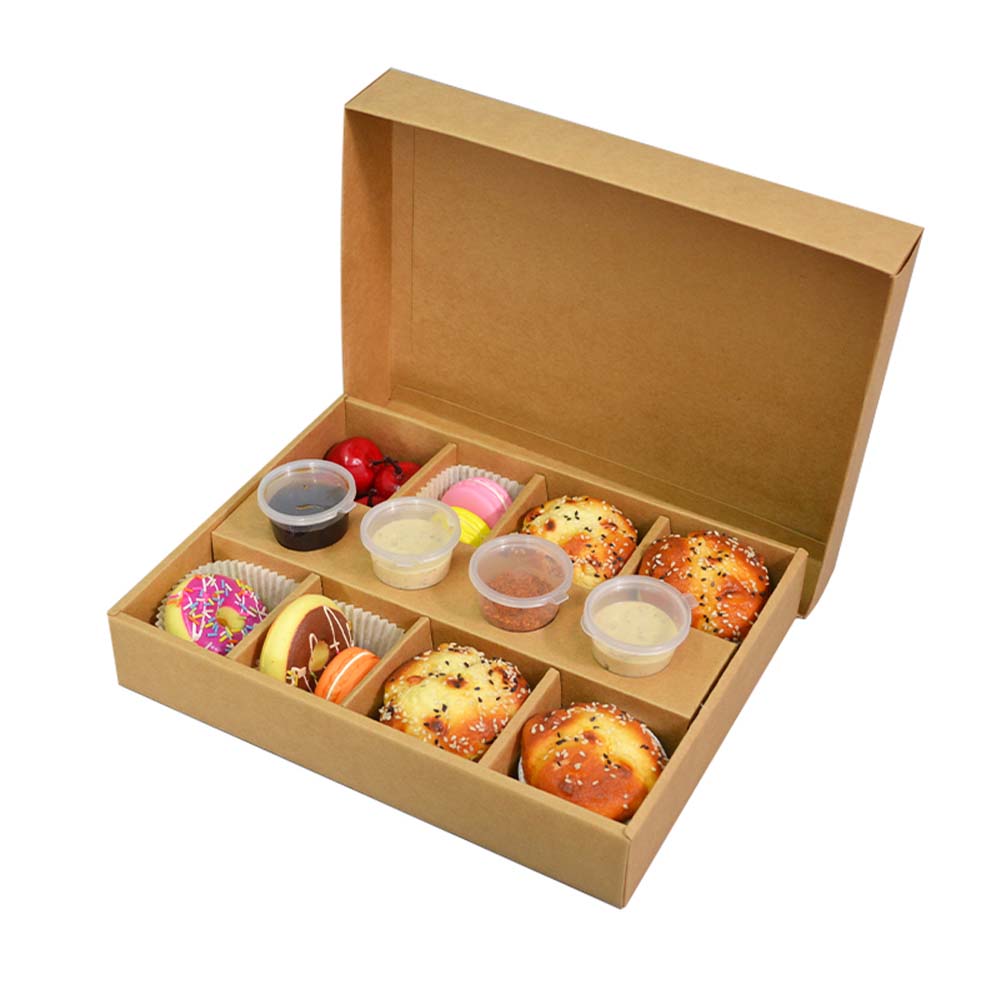
Welcome to the delicious world of food box packaging! In today’s fast-paced and convenience-driven society, the way our food is packaged plays a crucial role in capturing attention, preserving freshness, and enticing consumers. From mouthwatering images to eco-friendly materials, food box packaging has come a long way in revolutionizing the way we experience our favorite meals.
So why exactly is packaging so important in the food industry? The answer lies in its ability to not only protect and present products but also create an emotional connection with customers. In this blog post, we will explore the evolution of food box packaging, discuss different types of materials used, delve into successful designs that have left an indelible mark on consumers’ minds, and uncover how these boxes can influence purchasing decisions.
But before we dive deeper into this flavorful journey, let’s take a step back and appreciate how far food box packaging has come. Gone are the days when simple brown paper bags were enough to hold our culinary delights. Today’s packaging solutions are creative masterpieces that captivate us from first glance!
So grab your appetite for knowledge as we unravel what people are saying about food box packaging – prepare to be inspired by innovative ideas that will make you look at your next meal delivery or supermarket visit through new eyes!
Importance of packaging in the food industry
In today’s competitive food industry, packaging plays a crucial role in attracting and retaining customers. The importance of packaging goes beyond just protecting the food inside; it serves as a powerful marketing tool that can make or break a product’s success.
First and foremost, packaging is the first thing consumers see when they encounter a new product. It creates an initial impression that can influence their perception of quality and value. A well-designed package grabs attention, communicates brand identity, and entices potential buyers to pick up the product.
Moreover, effective packaging provides vital information about the contents inside. Nutritional facts, ingredients lists, allergen warnings – all these details help consumers make informed choices based on their dietary needs or preferences. Clear and concise labeling builds trust and ensures transparency between brands and consumers.
Packaging also plays a crucial role in ensuring food safety. Properly sealed packages protect against contamination during transportation and storage, extending shelf life while maintaining freshness. This is particularly important for perishable items such as fresh produce or dairy products.
Additionally, innovative packaging designs can enhance convenience for consumers. Easy-to-open containers with resealable features allow for portion control and reduce food waste – both key concerns in today’s environmentally conscious world.
Lastly but equally important is sustainability. With increasing awareness about environmental issues, more consumers are demanding eco-friendly options when it comes to packaging materials. Businesses that embrace sustainable practices by utilizing recyclable or biodegradable materials not only appeal to environmentally conscious customers but also contribute positively towards reducing waste generation.
Packaging holds immense importance in the food industry as it serves multiple purposes simultaneously: catching consumer attention through attractive design elements; providing essential information about nutrition; ensuring product safety; offering convenience features like easy opening or resealing options; as well as promoting sustainability through eco-friendly materials. As competition continues to rise within this industry segment, businesses must prioritize investing in high-quality packaging solutions that meet both functional requirements and aesthetic appeal.
The evolution of food box packaging
The evolution of food box packaging has come a long way over the years. In the past, food boxes were simple and practical, primarily used for transporting and storing food items. However, as consumer preferences changed and environmental concerns grew, packaging designs have evolved to become more sustainable and visually appealing.
One significant change in food box packaging is the shift towards using eco-friendly materials such as cardboard or biodegradable plastics. These materials are not only better for the environment but also offer advantages like being lightweight, easy to recycle, and cost-effective. Businesses are recognizing that sustainable packaging is not just a trend but a necessity in today’s world.
Another aspect of the evolution of food box packaging is its visual appeal. Gone are the days when plain brown or white boxes were acceptable. Consumers now expect their food boxes to be eye-catching and aesthetically pleasing. Packaging designs have become more creative with vibrant colors, engaging graphics, and innovative shapes that attract attention on store shelves or during online shopping experiences.
Additionally, technology has played a role in transforming food box packaging. With advancements in printing techniques and customization options, businesses can create personalized packages that align with their brand identity while still meeting customer needs for convenience and functionality.
In conclusion , it’s clear that there has been a significant evolution in food box packaging over time – from basic practicality to sustainable solutions with visually appealing designs. As consumers continue to prioritize sustainability and demand attractive packaging experiences, businesses must adapt by investing in eco-friendly materials and creative design strategies to stay competitive in an ever-changing market landscape.
Types of food box packaging
When it comes to food box packaging, there are several types of materials that are commonly used. One of the most popular options is cardboard packaging. Cardboard boxes are lightweight, sturdy, and can be easily customized with branding and design elements. They provide a cost-effective solution for businesses while ensuring the safety and freshness of the food items inside.
On the other hand, plastic packaging has its own set of advantages. Plastic boxes offer excellent durability and protection against moisture and contaminants, making them ideal for perishable or delicate food products. Additionally, plastic packaging is transparent, allowing consumers to see the contents without opening the box.
However, in recent years there has been a growing demand for more sustainable alternatives. Biodegradable packaging materials have emerged as an eco-friendly option that addresses environmental concerns associated with traditional cardboard or plastic boxes. These biodegradable options break down naturally over time without leaving harmful residues behind.
Choosing the right type of food box packaging depends on various factors such as product requirements, budget constraints, and sustainability goals. Businesses must carefully consider these factors to make informed decisions about their packaging choices.
Benefits of using sustainable packaging materials for food boxes
Sustainable packaging materials for food boxes have become increasingly popular in recent years, and for good reason. Not only do these materials help to reduce environmental impact, but they also offer a range of other benefits.
One of the key advantages of using sustainable packaging materials is that they are made from renewable resources. This means that they can be replenished over time, unlike traditional packaging materials such as plastic or Styrofoam which are derived from fossil fuels.
In addition to being renewable, sustainable packaging materials are often biodegradable or compostable. This means that at the end of their life cycle, they can break down naturally without causing harm to the environment.
Furthermore, sustainable packaging materials can help to enhance brand reputation. Consumers today are becoming more conscious about their purchasing decisions and actively seek out products with eco-friendly packaging. By using sustainable materials for food box packaging, businesses can appeal to these environmentally-conscious consumers and differentiate themselves from competitors.
Another benefit of using sustainable packaging is improved product protection. Many types of sustainable materials offer excellent insulation properties and protect food items from temperature fluctuations and physical damage during transit.
Moreover, choosing sustainable options can also lead to cost savings in the long run. While some may argue that these alternative materials come at a higher upfront cost compared to traditional ones like plastic or foam, investing in sustainability now can help businesses save on future expenses associated with waste management fees or potential fines due to non-compliance with regulations on single-use plastics.
Adopting sustainable packaging practices for food boxes brings numerous advantages including reduced environmental impact through the use of renewable resources and biodegradable/compostable alternatives; enhanced brand reputation by appealing to eco-conscious consumers; improved product protection during transportation; as well as potential long-term cost savings. It’s clear that incorporating sustainability into food box packaging is not just beneficial for the planet but also for business growth in an increasingly environmentally-aware market.
Examples of successful food box packaging designs
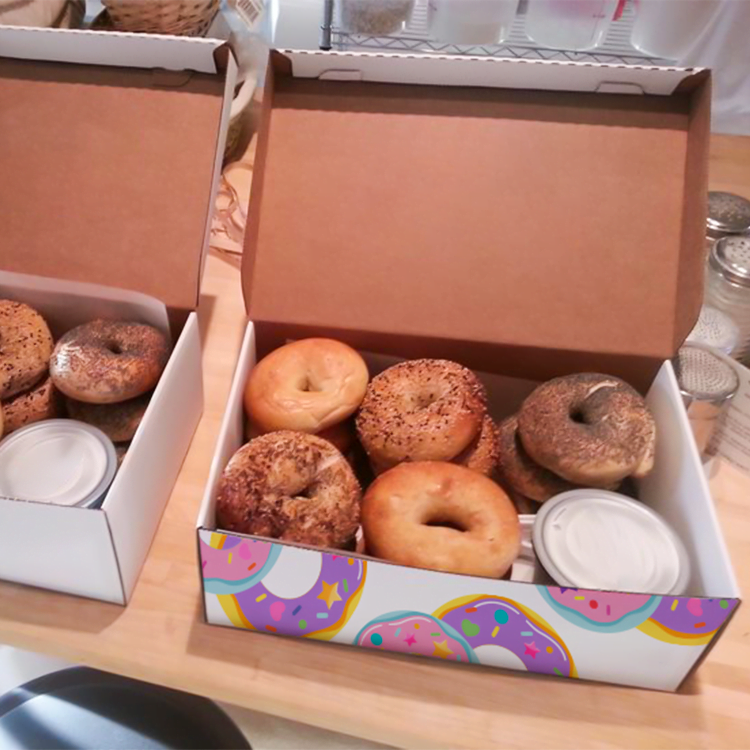
When it comes to food box packaging, the design plays a crucial role in attracting customers and creating a memorable brand experience. While there are countless examples of successful designs out there, let’s take a look at a few that have made waves in the industry.
One example is the packaging for HelloFresh, a popular meal kit delivery service. With its clean and modern aesthetic, their boxes feature vibrant colors and appetizing images of the prepared meals inside. This not only entices customers to try their offerings but also creates an element of excitement when receiving their package.
Another standout design is found in Graze snack boxes. Known for their variety of healthy snacks, Graze uses colorful patterns and playful illustrations on their packaging to convey freshness and fun. The combination of eye-catching visuals with clever copywriting makes opening one of these boxes feel like unwrapping a special treat.
For those looking for environmentally friendly options, Nada Grocery stands out with its minimalist approach to packaging. They use simple brown paper bags with bold black text showcasing product information and branding. This eco-conscious choice resonates with consumers who prioritize sustainability.
We can’t overlook the iconic Tiffany Blue Box used by Tiffany & Co., although not specifically for food products. The elegant simplicity of this famous packaging has become synonymous with luxury and sophistication – qualities that many brands strive to emulate.
These examples highlight how thoughtful design choices can make food box packaging more than just practical containers – they can elevate it into an integral part of the overall brand experience.
Consumer feedback on food box packaging and its impact on their purchasing decisions
Consumer feedback plays a crucial role in shaping the success of any product, and food box packaging is no exception. With social media platforms and online review sites, consumers now have more power than ever to voice their opinions about the packaging they encounter.
One common sentiment expressed by consumers is the desire for functional packaging that keeps their food fresh and secure during transport. They appreciate sturdy materials that prevent leaks or spills and are easy to open without creating a mess. Packaging that offers convenience, such as resealable options or compartments for different food items, also receives positive feedback.
Another aspect that often influences purchasing decisions is the visual appeal of food box packaging. Consumers are drawn to eye-catching designs with vibrant colors and appetizing images that make them want to try what’s inside. Creative packaging can create an emotional connection with customers and enhance brand recognition.
Sustainability is a growing concern among consumers, leading many to seek out eco-friendly food box packaging options. Feedback shows that people appreciate companies making efforts to reduce waste by using recyclable or biodegradable materials. They value brands that prioritize sustainability as it aligns with their own values and contributes positively towards environmental conservation.
Consumer feedback regarding labeling on food boxes cannot be ignored. Clear ingredient lists, nutritional information, allergen warnings, and proper date coding are all factors important for transparency and safety concerns of customers while making purchasing decisions.
In conclusion, understanding consumer feedback on food box packaging allows businesses to tailor their offerings better according to customer preferences. By incorporating functionality, attractive design elements, sustainability features,and transparent labeling into their packaging strategies,businesses can gain a competitive edge in today’s market.
Future trends in food box packaging
As the food industry continues to evolve, so does the packaging that contains our favorite meals. In recent years, we have seen several emerging trends in food box packaging that are shaping the way businesses package their products and connect with consumers.
One of these trends is eco-friendly packaging solutions. With increasing concern for the environment, consumers are more inclined to choose brands that use sustainable materials for their food boxes. Biodegradable options made from plant-based materials or recycled paperboard are gaining popularity as they reduce waste and minimize environmental impact.
Another trend is personalized packaging. Brands are realizing the importance of creating a memorable unboxing experience for their customers. By incorporating unique designs, custom labels, and even personalized messages on food boxes, companies can create a sense of exclusivity and connection with their target audience.
Furthermore, technology integration is becoming increasingly prevalent in food box packaging. QR codes and augmented reality features allow customers to interact with product information or access exclusive content through their smartphones. This not only enhances customer engagement but also provides valuable data insights for businesses.
Additionally, minimalist designs are on the rise. Clean lines, simple typography, and subtle colors create a sleek and modern aesthetic for food box packaging. This approach appeals to consumers who appreciate minimalism while conveying a sense of sophistication and high quality.
Convenience-driven innovations such as resealable closures or microwave-safe containers are anticipated to become more popular in future food box packaging designs. These features cater to busy individuals who seek quick meal options without compromising on taste or freshness.
In conclusion,the future of food box packaging lies in sustainability practices like biodegradable materials; personalization techniques that enhance brand loyalty; integrating technology for enhanced consumer interaction; minimalist designs promoting simplicity; convenient features catering to time-strapped individuals – all aimed at delivering an exceptional customer experience while reducing environmental impact.
Conclusion
Businesses in the food industry should prioritize sustainable and attractive packaging for a myriad of reasons. Using sustainable materials not only helps protect the environment but also aligns with consumers’ growing demand for eco-friendly products. By opting for biodegradable or recyclable packaging, businesses can reduce their carbon footprint and contribute to a more sustainable future.
Attractive food box packaging plays a crucial role in capturing consumer attention and influencing purchasing decisions. In an era where visual appeal matters, eye-catching designs can make a significant difference in attracting customers to choose one product over another.
Moreover, innovative and well-designed packaging can enhance the overall dining experience by creating anticipation and generating excitement about the contents inside. When customers open a beautifully packaged food box, it creates a memorable moment that adds value beyond just the taste of the food itself.
Additionally, businesses that invest in high-quality packaging demonstrate their commitment to delivering exceptional products and customer satisfaction. Packaging is often seen as an extension of brand identity, so carefully crafted designs can help build brand loyalty among consumers.
Prioritizing sustainable and attractive food box packaging is not just beneficial for business growth but also essential from a regulatory standpoint. As governments worldwide introduce stricter regulations on single-use plastics and environmental protection measures, adopting eco-friendly alternatives becomes imperative for long-term success.
In conclusion, businesses operating in the food industry should recognize the significance of sustainable and visually appealing packaging solutions. By embracing environmentally friendly materials while creating aesthetically pleasing designs that resonate with consumers’ preferences, they can differentiate themselves from competitors while contributing towards safeguarding our planet’s resources – ultimately leading to increased customer satisfaction and business success.
